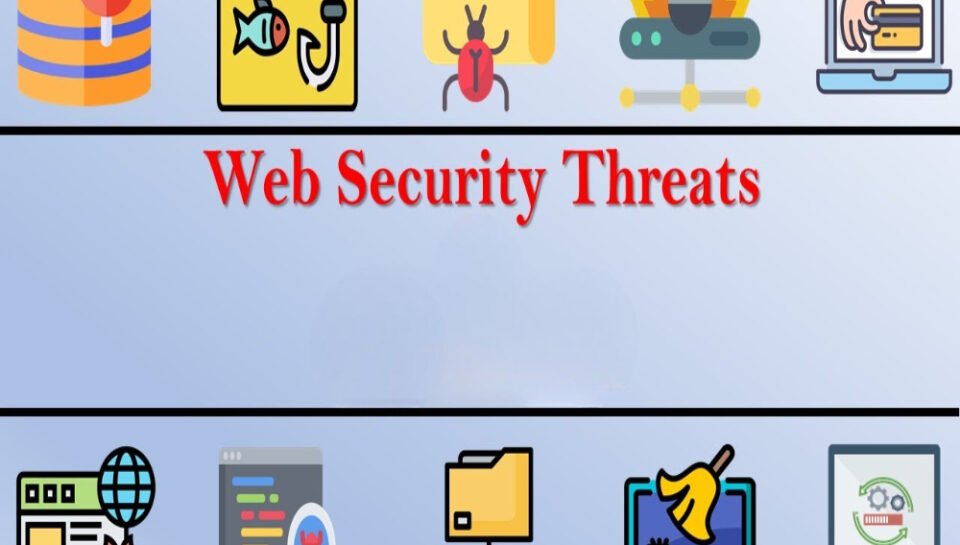
Detail the Common Types of Web Security Threats and How They Operate
Introduction
As the internet continues to power the modern digital economy, web applications have become critical tools for communication, transactions, and data exchange. However, the same accessibility that makes web applications convenient also exposes them to a wide array of cyber threats. Hackers constantly evolve their techniques to exploit vulnerabilities in websites, applications, and infrastructure. Understanding the most common types of web security threats and how they operate is essential for developers, businesses, and security professionals who aim to protect sensitive data and maintain trust. This article delves into the most prevalent web-based security threats and explains their operational mechanisms in detail.
SQL Injection (SQLi)
SQL Injection is one of the oldest and most dangerous web security threats. It occurs when an attacker inserts malicious SQL code into a web application’s input field to manipulate or access the database. For example, if a login form fails to properly sanitize inputs, an attacker could submit to bypass authentication. SQLi can result in unauthorized data access, data modification, or even full control over the database. Attackers exploit applications that dynamically construct SQL queries without input validation or parameterized queries.
Cross-Site Scripting (XSS)
Cross-Site Scripting attacks involve injecting malicious scripts into web pages viewed by other users. These scripts are usually written in JavaScript and execute in the victim’s browser, allowing the attacker to steal session cookies, capture keystrokes, redirect users to malicious sites, or manipulate webpage content. There are three main types of XSS:
- Stored XSS: The malicious script is permanently stored on the server.
- Reflected XSS: The script is reflected off a web server, typically via a URL.
- DOM-based XSS: The vulnerability lies in the client-side script rather than server-side.
XSS attacks exploit weak input validation and insufficient output encoding.
Cross-Site Request Forgery (CSRF)
CSRF tricks a logged-in user into unknowingly executing unwanted actions on a web application where they are authenticated. For instance, an attacker could send a crafted link via email that causes the user’s browser to perform a funds transfer or change account settings without their consent. Since the action is performed with the user’s session credentials, it appears legitimate to the server. CSRF exploits the trust that a site has in the user’s browser and typically targets state-changing operations.
Remote Code Execution (RCE)
Remote Code Execution allows an attacker to run arbitrary code on a remote server or application. RCE vulnerabilities are highly dangerous because they can lead to complete system compromise. These attacks usually result from flaws in file upload functionality, insecure deserialization, or command injection. Once exploited, attackers can install malware, pivot within the network, extract data, or gain persistent access. RCE threats often serve as entry points for more complex attacks such as ransomware.
Man-in-the-Middle (MITM) Attacks
MITM attacks occur when an attacker intercepts and possibly alters the communication between two parties without their knowledge. This can happen through insecure Wi-Fi networks, compromised routers, or DNS spoofing. In web contexts, attackers can steal login credentials, inject malicious content, or capture sensitive data being transferred. Encryption (HTTPS), VPNs, and certificate pinning are effective countermeasures. MITM attacks exploit the absence or misconfiguration of secure communication channels.
Denial of Service (DoS) and Distributed Denial of Service (DDoS)
DoS and DDoS attacks aim to overwhelm a website or application with excessive traffic, making it unavailable to legitimate users. DoS attacks originate from a single source, whereas DDoS attacks are launched from multiple compromised systems or botnets. These attacks can crash servers, disrupt business operations, and degrade user experience. DDoS attacks are often used as distractions while other intrusions take place. Rate limiting, web application firewalls (WAFs), and content delivery networks (CDNs) are used to mitigate these threats.
Directory Traversal (Path Traversal)
Directory Traversal allows attackers to access restricted directories and files on a web server by manipulating URL parameters. For example, using ../ in a URL path can navigate out of the intended directory and reach sensitive files such as /etc/passwd on Unix systems. This occurs when applications fail to sanitize user input or restrict file access properly. Exploiting this vulnerability can reveal system files, source code, or configuration data that aid further attacks.
Insecure File Uploads
Web applications that allow users to upload files can be exploited if those files are not adequately validated. Attackers may upload scripts or executables disguised as images or documents. If these files are stored and executed on the server, it can lead to remote code execution or server takeover. To prevent this, applications should check MIME types, restrict allowed file types, scan files for malware, and store uploads in non-executable directories.
Broken Authentication and Session Management
Web applications that do not securely manage authentication and session tokens are vulnerable to attacks such as session hijacking, credential stuffing, and brute-force attacks. Weak password policies, exposed session IDs, and lack of session expiration allow attackers to impersonate legitimate users. Secure authentication involves implementing Multi-Factor Authentication (MFA), session timeouts, secure cookie handling, and protection against enumeration attacks.
Security Misconfiguration
Security Misconfiguration is a broad category that includes using default credentials, leaving unnecessary services enabled, exposing sensitive files, and improper error handling. Such misconfigurations provide easy entry points for attackers to exploit. Common issues include verbose error messages, missing security headers, and unpatched systems. Regular configuration reviews, automated scans, and adherence to security best practices are essential for prevention.
Insider Threats and Social Engineering
Not all web threats come from external sources. Insider threats, whether intentional or accidental, can lead to data leakage or system compromise. Employees with access to sensitive data may abuse their privileges or fall victim to phishing attacks. Social engineering tricks users into revealing credentials or clicking on malicious links. Security awareness training, role-based access controls, and activity monitoring help reduce these risks.
Bot Attacks and Credential Stuffing
Automated bots are used to execute malicious activities like scraping content, checking stolen credentials, or launching spam campaigns. Credential stuffing involves bots attempting to log into accounts using known email-password pairs from past data breaches. Web applications need to implement bot detection, CAPTCHA, rate limiting, and IP blocking mechanisms to fend off such attacks.
Conclusion
The internet is a complex and dynamic environment where web applications face constant threats from a diverse array of cyberattacks. From SQL injections and cross-site scripting to DDoS attacks and insider threats, understanding how these threats operate is the first step toward building a robust defense strategy. Developers, administrators, and organizations must remain vigilant by adopting secure coding practices, performing regular security audits, updating software, and educating users. As cyber threats evolve, so must the techniques and tools used to combat them. A well-informed and proactive approach to web security ensures the integrity, confidentiality, and availability of digital systems in today’s connected world.
Hashtags
#WebSecurity #CyberThreats #SQLInjection #XSS #CSRF #RCE #MITMAttacks #DDoS #AuthenticationSecurity #SessionManagement #SecurityMisconfiguration #CredentialStuffing #BotProtection #DirectoryTraversal #WebAppSecurity #InsecureUploads #InsiderThreats #PhishingAttacks #SecureCoding #OWASPTOP10 #WebSecurityTips #ZeroTrust #SecureWebApps #DevSecOps #APIProtection #ThreatAwareness





